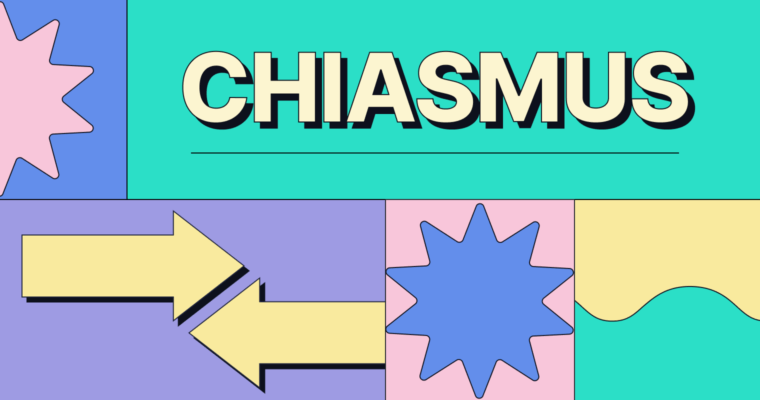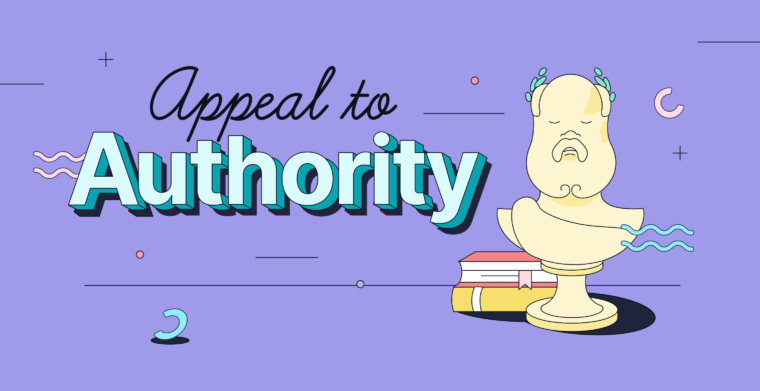
Without realizing it, you’ve likely used kairos in your everyday communication or writing. In rhetoric, kairos refers to identifying situational context and a decisive moment for a persuasive argument. Whether in an argumentative essay for school or while conversing with a coworker, using this rhetorical technique lets you communicate your position in an impactful way.
Here, we’ll examine the meaning of kairos and its relationship with other rhetorical devices, including ethos, logos, and pathos.
What is kairos?
Kairos is a rhetorical device that identifies a critical moment to perform an action for maximum effect. In language, whether written or spoken, this rhetorical appeal can make an idea or purpose more compelling.
The concept of kairos comes from ancient Greek philosophy, where it has a role to play among the arts of rhetoric—i.e., persuasive speaking. Rhetoric is traditionally broken down into three parts, or modes of persuasion, which make up what’s called the rhetorical triangle: ethos, pathos, and logos. These go back to Aristotle’s Rhetoric—which dates from the fourth century BCE, in case you wondered—and he describes them more or less as follows:
- Ethos: appeals to the speaker’s ethics, establishing how their perspective and character should be trusted and deemed credible
- Pathos: appeals to the audience’s emotions through choice of tone and relatable anecdotes
- Logos: appeals to the audience’s sense of logic through facts, data, and well-reasoned conclusions
There must be a balance between these rhetorical appeals, and kairos is the connective tissue that considers the appropriate context and timing for an argument.
How is kairos used?
Kairos is used to persuade an audience that the argument is relevant to them at that precise moment. To put it simply, kairos is a matter of timeliness. The intention is to create a sense of urgency and convince the listener or reader to take immediate action.
Different situational factors can lend context to your argument and so strengthen its kairos. The surrounding environment, cultural and historical events, economic conditions, political climate, time-related nuances, and social factors all contribute to how audiences make sense of a message they receive in the moment.
When is kairos used?
Kairos is used across various types of persuasive writing, whether you’re reporting on a climate crisis or selling a product. Below are a handful of situations when kairos is used in real-world communication.
Advertising campaigns
Advertisers create campaigns that align with current events and trends. By incorporating kairos into their execution, their ads become more timely and resonate with their target audience.
Advocacy
Bringing the most important and relevant issues of the moment to the surface is the epitome of kairos, and it’s often seen as advocacy work. The intent of this kind of messaging is to present an issue of deep importance to the audience and to inspire action.
News and journalism
Journalists report current events and stories as they relate to their audience. This attention to the audience’s immediate concerns is an example of kairos.
Political messaging
In politics, kairos is used when alluding to current events and the timely concerns of politicians’ constituents. Additionally, there are opportune moments in a political climate when highlighting a certain issue might have a greater impact on the audience.
Social media engagement
Influencers and brands appeal to kairos through social media content. For example, they might lean into a viral trend as a way to boost engagement for a promotion or highlight a limited-time product drop.
Kairos examples
Here are two kairos examples from across different communication mediums.
Speech: Dr. Martin Luther King Jr.’s “I Have a Dream” speech
An excellent example of an appeal to kairos in a speech is seen with Dr. Martin Luther King Jr.’s famous “I Have a Dream” speech. He delivered this speech during the March on Washington in 1963.
Dr. King effectively appealed to kairos by addressing the urgent and timely issues of racial injustice and civil rights in the United States during the 1960s. He seized the moment and the context of the civil rights movement, delivering a powerful message that resonated with the audience and the broader American public.
Literature: Charles Dickens’s A Christmas Carol
In this example of kairos, Ebenezer Scrooge, the cold and uncharitable protagonist of Dickens’s story, is visited by three ghosts—timed to appear to him just as the Christmas holiday begins. You might call this a double case of kairos, because the context is important both to Scrooge and to us, the readers. It’s a time of year traditionally dedicated to generosity, joy, and kinship. That he at first rejects this attitude but eventually accepts it is made stronger for us by the fact that this occurs at Christmastime.
Kairos FAQs
What is kairos?
Kairos is a rhetorical appeal that uses situational context and precise timing to deliver a message so it’s received with the greatest impact and urgency.
How does kairos fit into logical argument?
Kairos is a rhetorical strategy that’s connected with the other modes of persuasion: ethos, pathos, and logos. When these four rhetorical appeals are applied, they support each other. Kairos supports an author’s credibility (ethos) by emphasizing the context of the message and appropriate timing. Kairos’s effect can intensify the emotional appeal that pathos stirs, and kairos and logos heavily involve a call to strategy and reason.
When is kairos used?
Kairos is used in all modes of communication, visual, verbal, and written. It can be used in political speeches, lawsuit arguments and rebuttals, advertising, social media, opinion pieces and editorial stories, and more.






